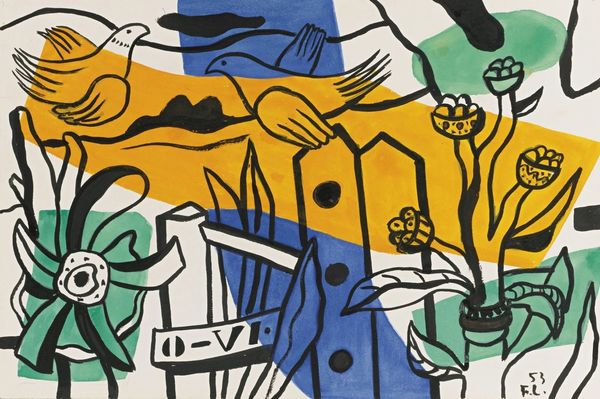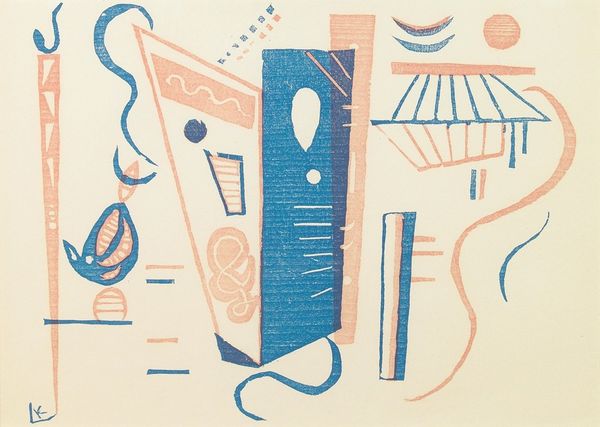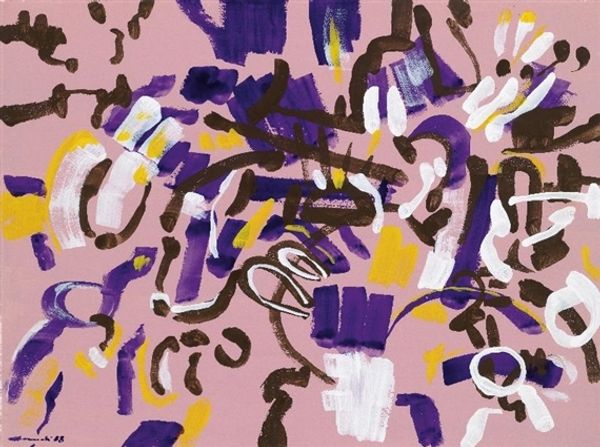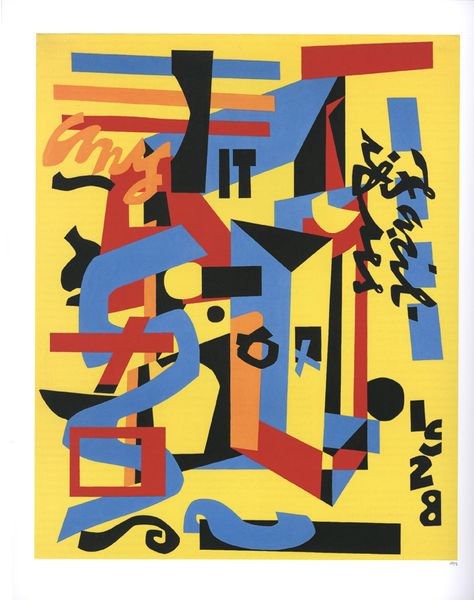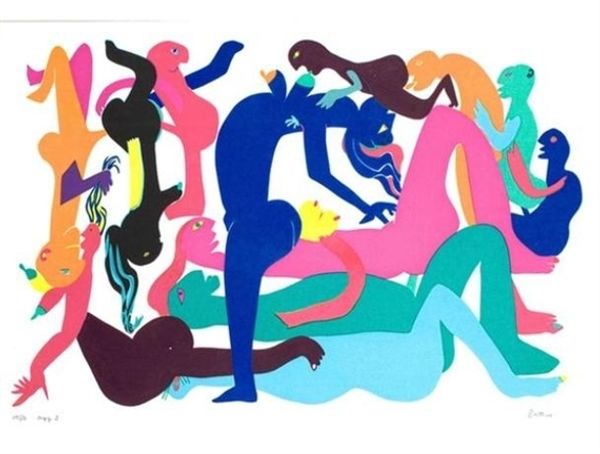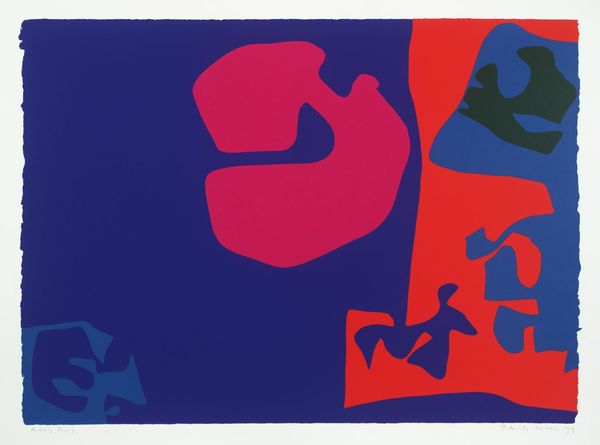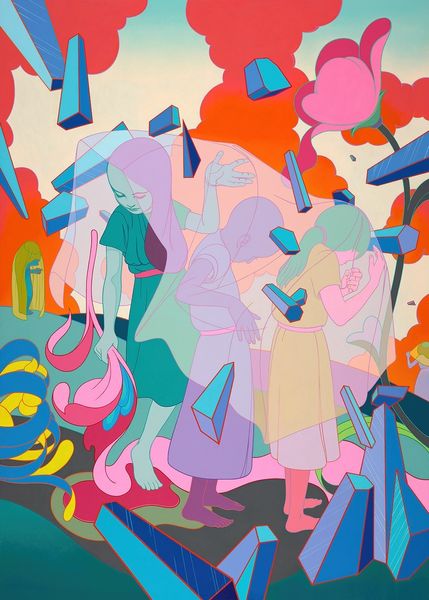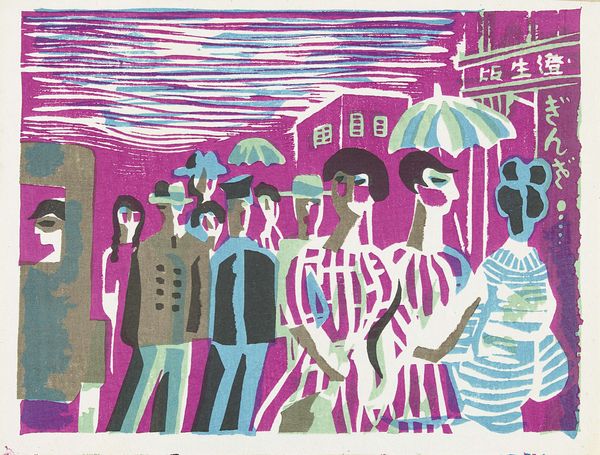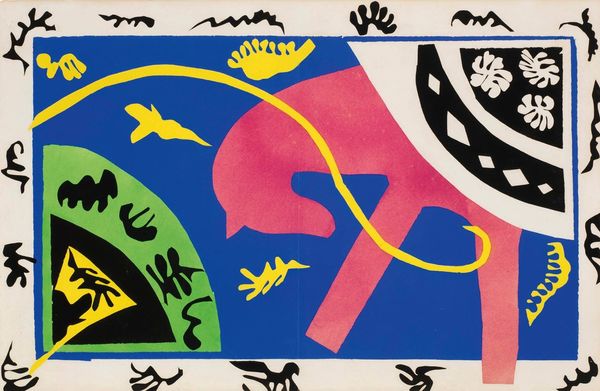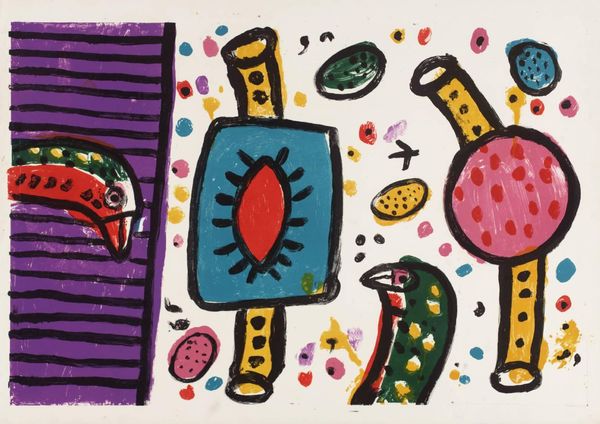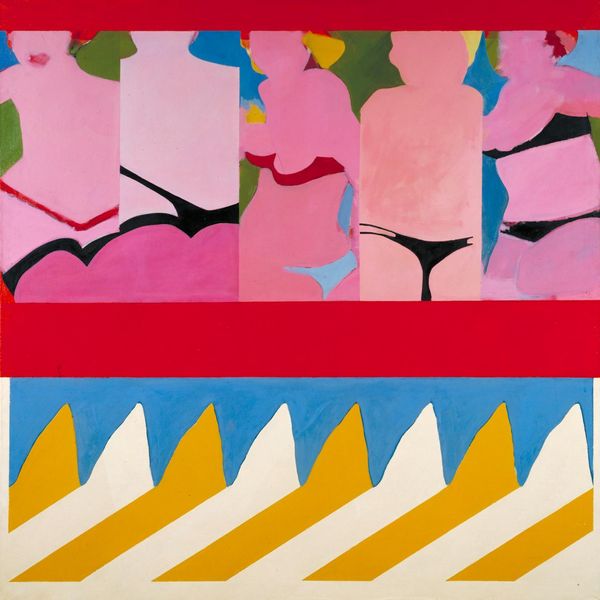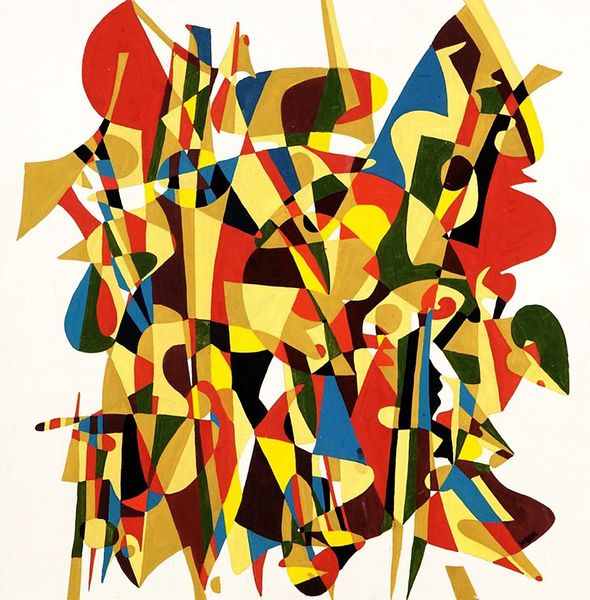
Copyright: Public Domain: Artvee
Curator: Here we have Wassily Kandinsky's "Klänge Pl.19", a woodcut print from 1913. Editor: It’s like a child’s cityscape, bold colors flattened into these rather unsettling shapes. Curator: Precisely. Kandinsky, deeply invested in the spiritual in art, explores the relationship between color and form as tools for non-objective expression. Note how the interplay between line and form serves to disrupt traditional spatial relationships. Editor: The German Expressionists really threw spatial reasoning out the window, didn’t they? I find myself thinking about the context in which Kandinsky made this work. This was right before the conflagration of the first World War… Did that heightened sense of anxiety and social turmoil influence the intensity here? Curator: It’s hard to deny the pervasive pre-war tension might be evident. But, to appreciate this print, consider it through a purely formal lens. It reflects Kandinsky’s synesthetic belief that art could evoke sensory experiences. Can you not feel a vibration from this print? A sense of…discord, even? Editor: I certainly sense a kind of disruption. Looking at the composition and stark contrast between the salmon, blues and yellows—this jarring sense reflects, to me, a social order in upheaval. It foreshadows what lay ahead in Europe during this time. Curator: Perhaps. However, let's remember, too, that Kandinsky co-founded the "Blaue Reiter" group which sought to express spiritual truths through abstraction. "Klänge Pl.19" uses abstraction not as nihilistic social commentary but as a visual language to suggest a new, internalized reality. Editor: So you’re suggesting Kandinsky’s turn towards abstraction sought transcendence amidst an increasingly complicated social landscape. His focus might not necessarily be to critique, but rather rise above. It speaks volumes about art’s potential roles within the zeitgeist of turmoil. Curator: Exactly! It is the very essence of artistic liberation through pure form. Editor: Thinking about it this way definitely shifts the experience with this piece. Curator: Art has that power, doesn’t it? Editor: It certainly does. And perhaps art history helps us consider how we bring ourselves into the conversation.
Comments
No comments
Be the first to comment and join the conversation on the ultimate creative platform.

